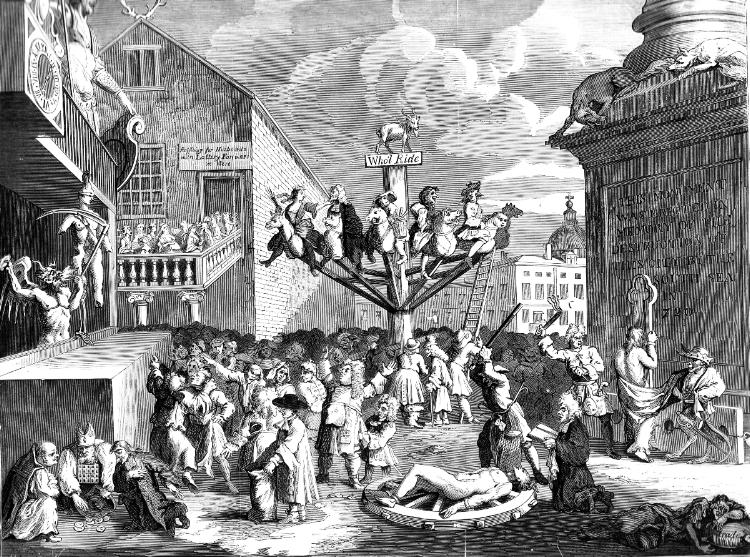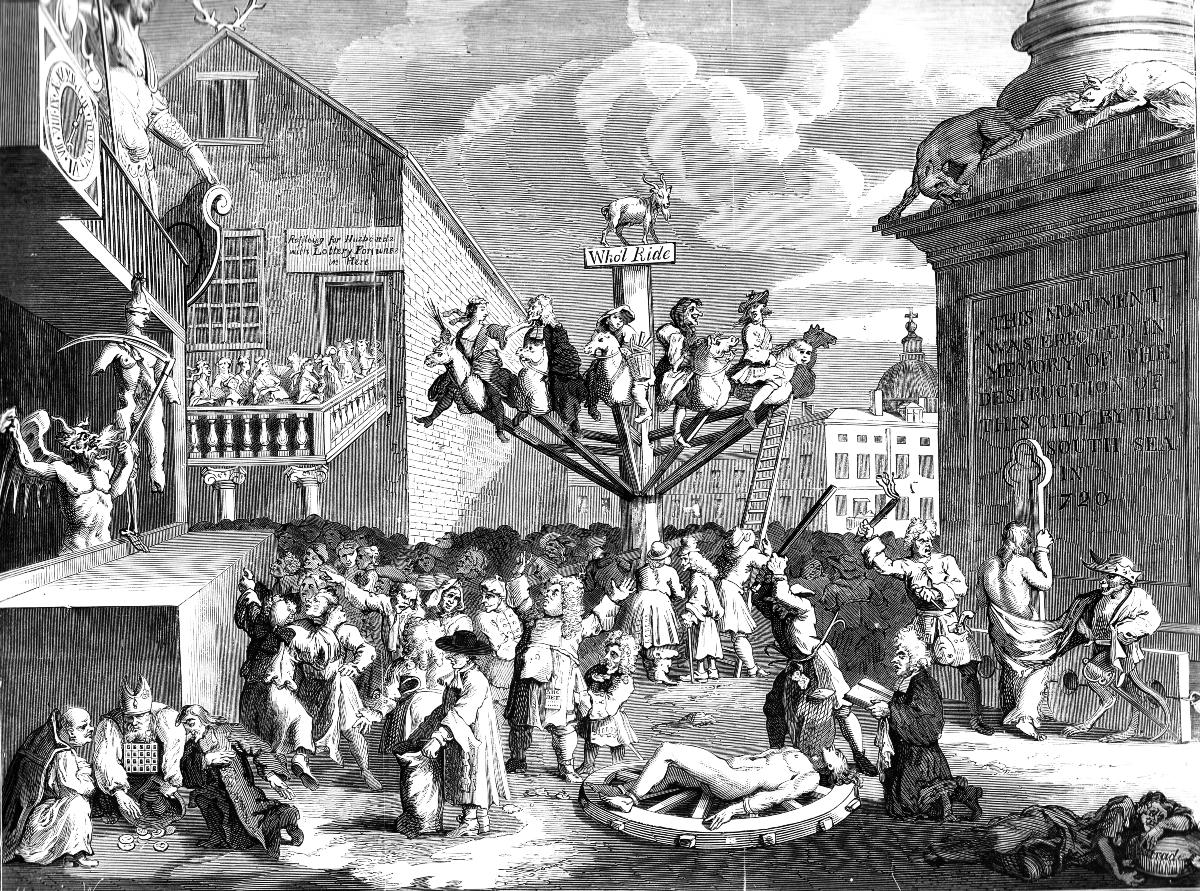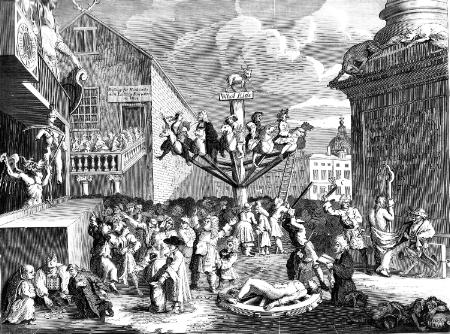
|

|
The amazing web site of Shakespeare's Sonnets. The South Sea Bubble, by Hogarth.
HAKESPEARE'S
ONNETS
This is part of the web site of Shakespeare's sonnets
PICTURE GALLERY.
William Hogarth 1697 - 1764.
The
South Sea Bubble - an Allegory, c.
1721,
possibly
later.
| The
South Sea Bubble is the name given to a financial scandal of 1720, in
which many people in Britain were totally ruined, aristocrats and
middle class in equal measure. It is similar in many
ways to the dot.com boom of our own times, or the more
recent sub-prime mortgage fiasco, but it was relatively more disastrous
in
its consequences in that many innocent people were bankrupted and a
large proportion of the population were affected. Even those
who had not speculated at all, but who had money in banks which folded
as a result of investment in the company, were ruined. So it
was not entirely a question of natural justice, by which the greedy
were punished, for many who had stood aloof from the frenzy lost all
their savings through no fault of their own, The Company was formed in 1711, but it was not until 1720, when it proposed to take over government debt, and redeem it by the supposedly fantastic profits to be made from the monopoly trade from South America, that interest and speculation took hold. In a few months the shares climbed from £100 in May 1720 to over £1000 in August. The shares then collapsed disastrously in September, bankrupting thousands. The company grossly overestimated the benefits of the South America trade, which after the end of the war against Spain turned out to be very minimal. There was no hope of repaying the money which had been invested in the company. However the government of the time was also involved in the scandal and gave credence to the company. It thought that the scheme was sound and that by selling off government debt it could free itself from an onerous burden. The reality was, as we can see with hindsight, that the prospects of trade with South America were very limited and were severely curtailed by Spanish interests, but this did not deter investors of the time, who borrowed money to buy inflated shares. They then could not repay their debt when the crash came. It is not known if Hogarth himself invested in the scheme. The print itself is quite difficult to interpret. In one corner a priest, a rabbi and a puritan are gambling, while trade in the opposite corner lies dying. This perhaps suggest that the churches were indifferent to the disaster, or were implicated in it. The devil on a balcony is cutting up Fortune and throwing pieces of his flesh to the multitude below. There is a whirligig or roundabout on which daredevils or the speculators are willing to ride. On the left a queue of hopefuls lines up for a raffle of husbands with lottery fortunes. In the foreground a figure, perhaps honesty, is being broken on the wheel. My text of circa 1880 says " In the foreground a wretch is being broken on the wheel, perhaps a reminiscence of Count Horn in Paris. (See Count Horn for details.) L. H. a ruffian is scourging a poor fellow who is turning up his great toes in agony. These are designed to represent Honour and Honesty punished by Selfishness and Villainy." This source also states that "The figure of the Demon hacking at Fortune, and the lame swash-buckler, half baboon, half-imp, that keeps guard over the flagellated man, are copied pretty literally from Callot - an eminent French artist, distinguished and indeed martyrised for his devotion to heraldry." However I have not been able to verify these references, or to identify L. H. In so far as this is a lesson for our own times, plus ça change, plus c'est la même chose. |
||


Shakespeare's Sonnets:
| Start here with the first sonnet |
|
Sonnets 1 - 50 | Some links to other sites | ||
|
|
Sonnets 51 - 100 | ||||
|
|
|
Sonnets 101 - 154 | For
a global search use all the sonnets as
plain text 1-154 or use the first line index. |
If
you have enjoyed this web site, please
visit its companion - Pushkin's Poems |
|
| Map of the site | |||||
| Views of London as it was in 1616. |
London Bridge As it was in Shakespeare's day, circa 1600. |
To
search for a line or phrase in the sonnets
go to the sonnets as plain text and use the browser text search engine. |
| Views of London as it was in 1616. |
London Bridge As it was in Shakespeare's day, circa 1600. |
To search for a line or phrase in the sonnets
go to the Sonnets as plain text and use the browser text search engine. |
| Sonnets 1 - 50 | Back to home page | |
| Sonnets 51 - 100 | If
you have enjoyed this web site, please
visit its companion - Pushkin's Poems |
|
| Sonnets 101 - 154 | If you wish to comment on this site please refer to details on the home page. | |
| Copyright ©of this site belongs to Oxquarry Books Ltd |

Copyright ©of this site belongs to Oxquarry Books Ltd